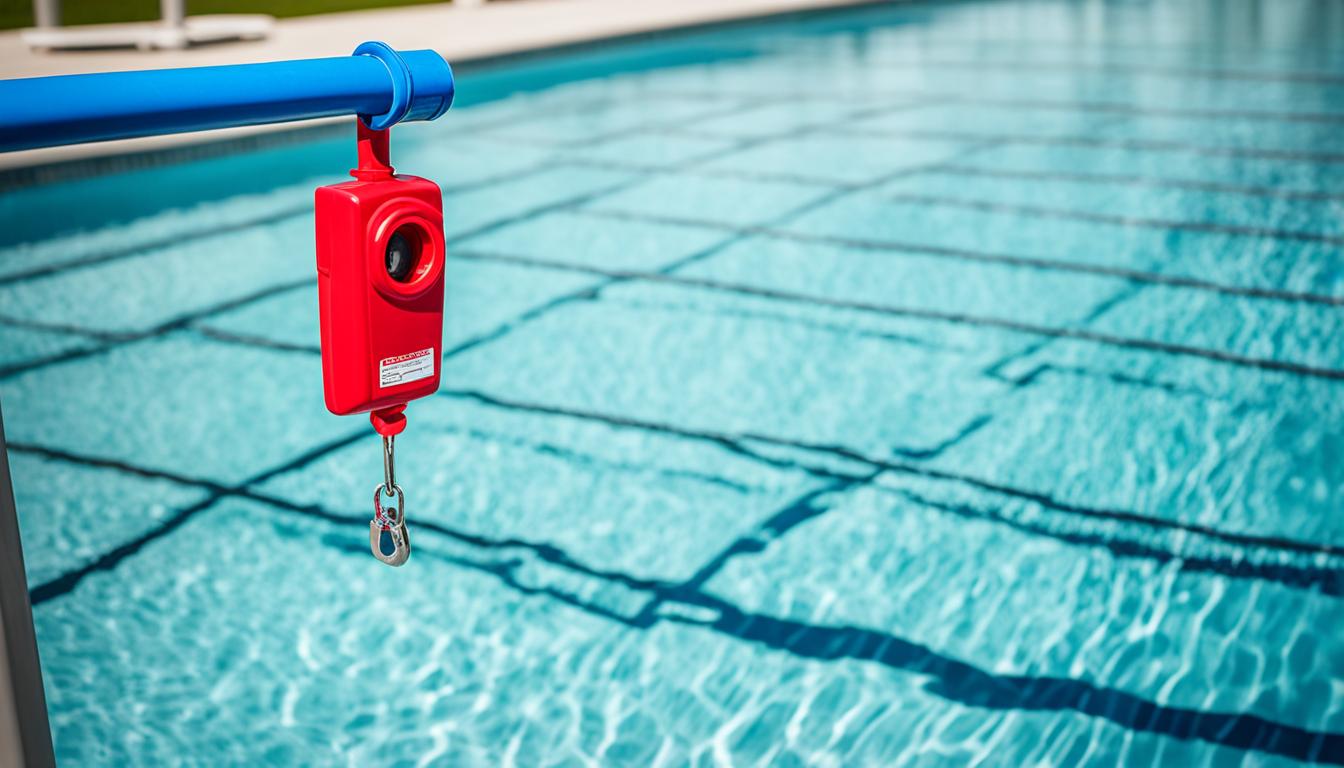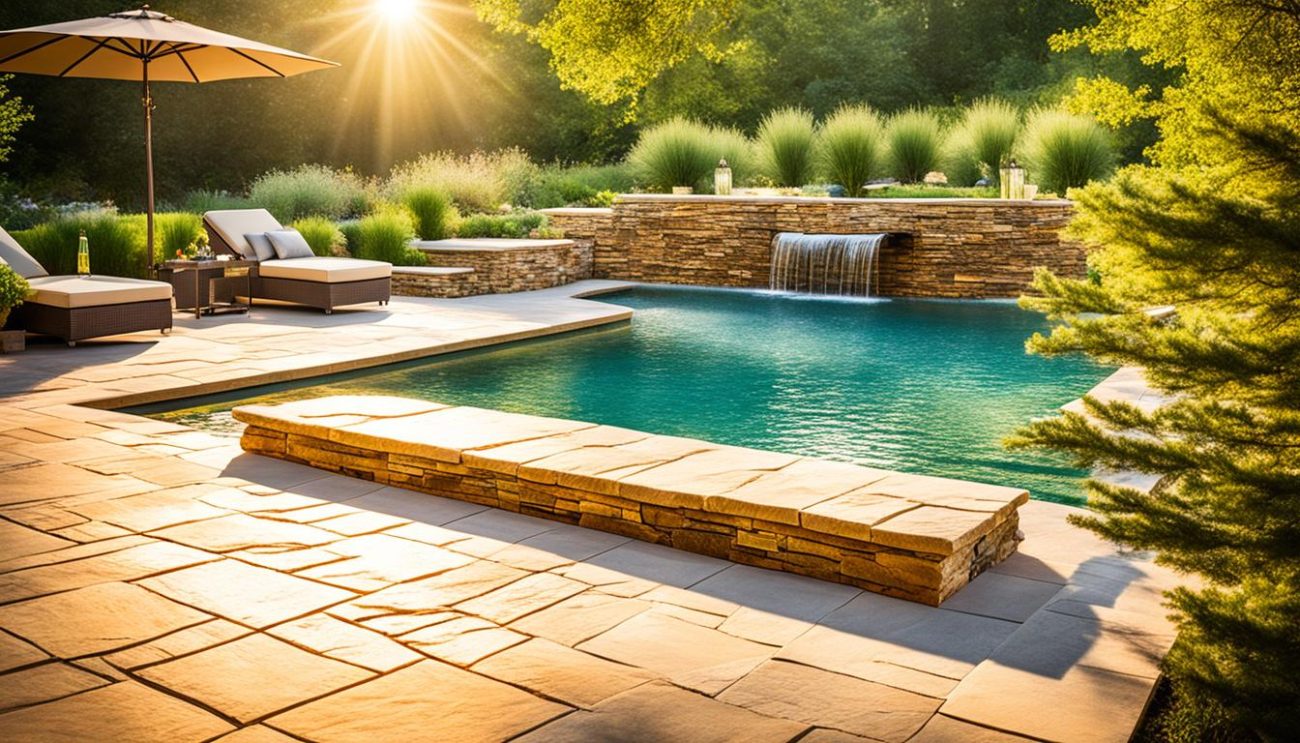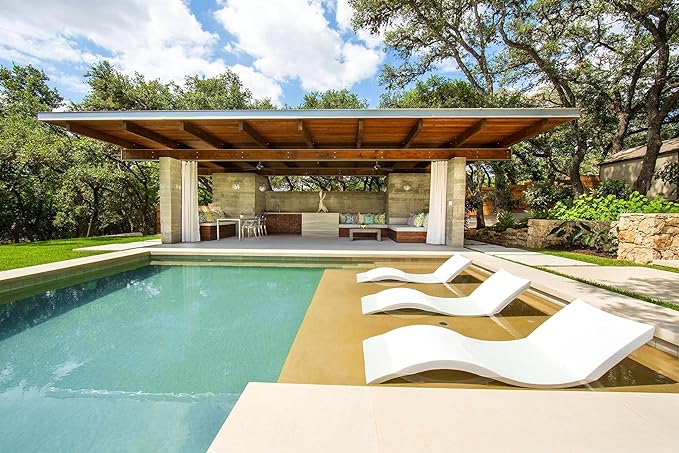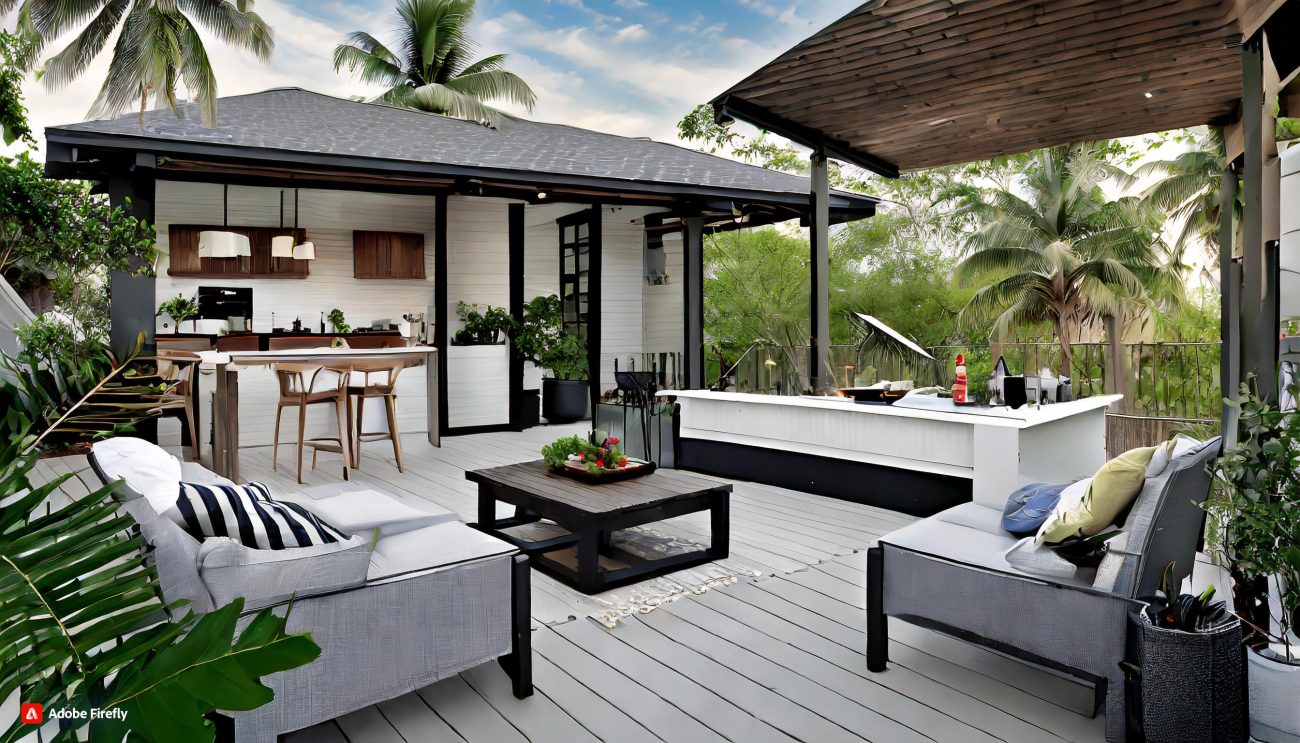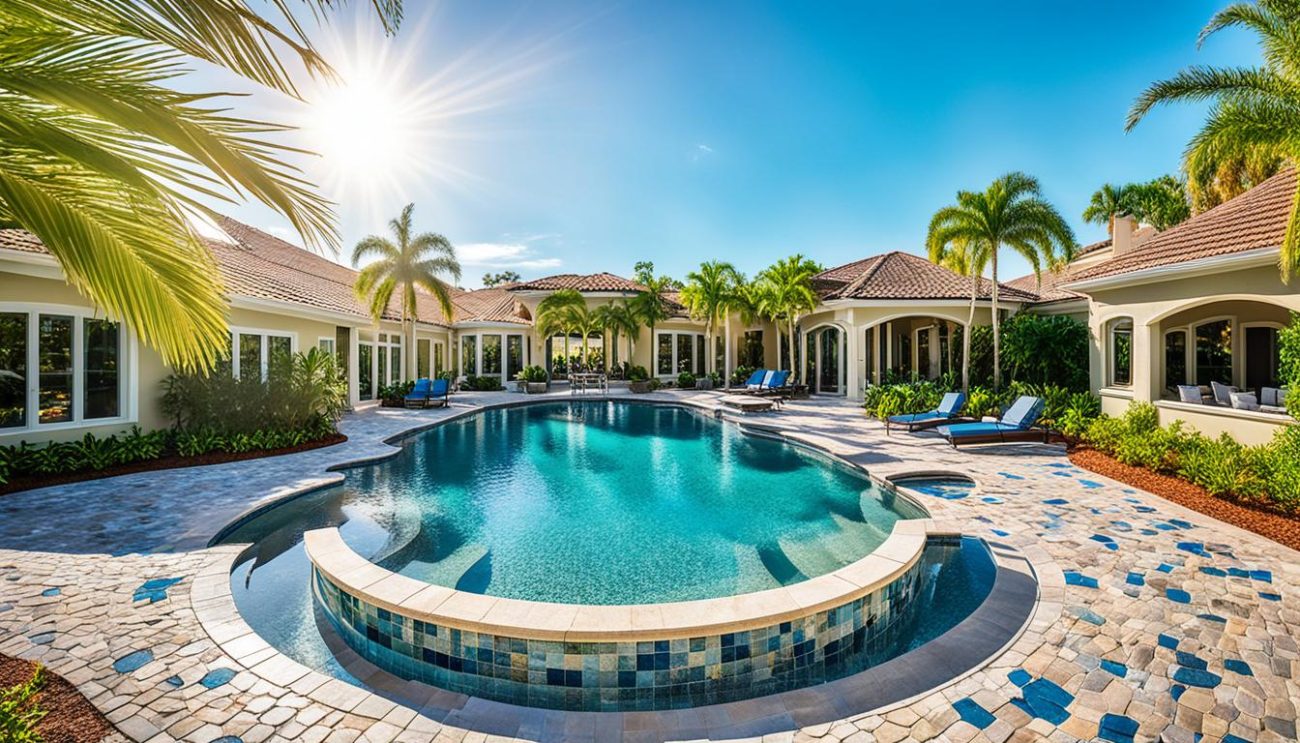Welcome to our guide on pool safety essentials. We understand the importance of creating a safe environment around the pool, especially when it comes to ensuring the well-being of our loved ones, particularly children. That’s why we’re here to discuss the crucial elements of pool safety, including fencing, alarms, covers, and compliance with regulations. By implementing these measures, we can take proactive steps towards childproofing our pool areas and preventing accidents.
When it comes to pool safety, we need to consider multiple layers of protection. That’s why organizations such as the Pool and Hot Tub Alliance (PHTA) recommend a comprehensive approach that includes adult supervision, proper fencing, safety covers, locking hot tub covers, alarms, rope and float lines, and appropriate pool toys and equipment. Let’s dive into the details and explore the key elements of pool safety.
Adult Supervision and Whistle
Constant adult supervision is the cornerstone of pool safety. We must ensure that there is always at least one non-swimming adult present to provide constant supervision. Additionally, having a whistle on hand can be a valuable tool for quickly alerting and commanding attention in case of emergencies or potential dangers.
Fencing for Pool Safety
Installing a pool safety fence is a vital step in preventing unauthorized access to the pool area. There are various fencing options available to suit different tastes and budgets. However, before proceeding with the installation, it is crucial to consult your local building code office or regulatory organizations to ensure compliance with barrier requirements. Self-closing gates and pool enclosures can further enhance the safety and security of your pool area.
Safety Covers for Pool Protection
Safety covers provide an additional layer of protection when the pool is not in use. These non-penetrating covers completely cover the pool and block access to the water, reducing the risk of accidents. It is essential to choose covers that meet the ASTM F13-46 standard, ensuring their effectiveness in preventing pool water access.
Locking Hot Tub Covers
For those with hot tubs, locking safety covers are a must-have. These covers add an extra layer of security and prevent unauthorized access to the hot tub. Make sure to select covers that meet the safety standards set by ASTM International (ASTM F1346-91), ensuring the highest level of hot tub security.
Alarms, Rope and Float Line, Toy Safety
Alongside fencing and covers, alarms play a crucial role in alerting us to potential dangers. Door and exit alarms, fence gate alarms, and water level sensors can provide early warning signs and prompt action. Additionally, setting up a rope and float line across the pool can visually delineate the separation between the shallow and deep ends, enhancing safety. Lastly, it is important to ensure that all pool toys and recreational equipment are safe and age-appropriate.
Conclusion
When it comes to pool safety, we must take a comprehensive approach. By implementing layers of protection, including adult supervision, fencing, safety covers, locking hot tub covers, alarms, rope and float lines, and adhering to safety regulations and compliance standards, we can create a secure environment for ourselves and our families. Remember, regular maintenance and proper storage of pool equipment and supplies are also important factors contributing to a safe pool area.
Key Takeaways:
- Pool safety requires implementing multiple layers of protection.
- Constant adult supervision is crucial for pool safety.
- Installing a pool safety fence and using self-closing gates are essential.
- Safety covers and locking hot tub covers provide added protection.
- Alarms, rope and float lines, and age-appropriate toys contribute to a safer pool environment.
Adult Supervision and Whistle
When it comes to pool safety, one layer of protection stands above the rest – constant adult supervision. It is our responsibility to ensure the safety of those in and around the pool. That’s why having at least one non-swimming adult present to supervise at all times is crucial.
But with all the distractions that life brings, how can we ensure that our attention remains focused on pool safety? That’s where a simple whistle can make a big difference. A whistle serves as a powerful tool to alert and command everyone’s attention promptly in case of an emergency or potential danger.
Imagine this scenario: you’re enjoying a poolside barbecue with friends and family. The pool is filled with laughter and splashes. Suddenly, you notice a child struggling in the water. Without hesitation, you grab your whistle and blow it urgently. The sharp sound cuts through the noise, instantly grabbing the attention of everyone nearby. Within seconds, you and others rush to the child’s aid, preventing a potential tragedy.
By having a whistle easily accessible, we can respond quickly and effectively to emergency situations, potentially saving lives. It serves as a reminder that we should never underestimate the importance of constant supervision and having the right tools at our disposal.
“Constant adult supervision is the most essential layer of protection for pool safety.”
Let’s make pool safety a top priority and always remember to have a whistle within reach. It’s a small but powerful device that can make a big difference in ensuring the safety of our loved ones.
Takeaways:
- Constant adult supervision is essential for pool safety.
- Always have at least one non-swimming adult present to supervise.
- A whistle is a powerful tool to alert and command attention in case of an emergency.
- Keep a whistle easily accessible to respond quickly to potential dangers.
Fencing for Pool Safety
Installing a pool safety fence is an essential step to enhance pool safety and protect children from potential accidents. A well-designed and sturdy pool area barrier acts as a physical barrier, preventing unsupervised access to the pool. Here are some key points to consider when choosing the right pool safety fencing:
Fence Options
There are several types of pool safety fencing options available to suit different preferences and budgets. These include:
- Metal fences: Durable and low-maintenance, metal fences such as aluminum and steel offer a robust solution for pool safety.
- Mesh fences: These fences are transparent and provide clear visibility of the pool area while still effectively preventing unauthorized access.
- Glass fences: Glass fences offer an elegant and modern look, providing an unobstructed view of the pool area.
- Wood fences: Wood fences are a popular choice for their natural aesthetic appeal and can be customized to complement the overall landscape.
- Vinyl fences: Vinyl fences are durable, low-maintenance, and available in various styles, making them a versatile option for pool safety.
When selecting a fence option, consider factors such as durability, maintenance requirements, visibility, and aesthetics. It is also essential to choose a height that meets the local building code requirements.
Building Code Requirements
Before installing a pool safety fence, it is crucial to be aware of the building code requirements in your area. Building codes specify the minimum fence height, materials, gate requirements, and other safety standards that must be met to ensure compliance.
It is important to present your plans and design ideas to your local building code office or other regulatory organizations to ensure compliance with barrier requirements.
Additional Considerations
When installing a pool safety fence, there are a few additional considerations that can further enhance safety:
- Self-closing and self-latching gates: Ensure that the fence has a gate that automatically closes and latches securely to prevent unintentional access.
- No gaps or climbing footholds: Check for any gaps or footholds in the fence that could allow children to crawl under or climb over the barrier.
- Clearance from pool edge: The fence should maintain a minimum distance from the pool edge to prevent direct access to the water.
- Regular maintenance: Regularly inspect the fence for any damage or wear and make necessary repairs to ensure its effectiveness.
By selecting the right pool safety fencing, adhering to building code requirements, and considering additional safety measures, you can create a secure pool area that gives you peace of mind and protects your loved ones from potential pool hazards.
| Fence Option | Description |
|---|---|
| Metal fences | Durable and low-maintenance. Offers robust protection. |
| Mesh fences | Transparent and provides clear visibility of the pool area. |
| Glass fences | Elegant and modern, offers an unobstructed view. |
| Wood fences | Natural aesthetic appeal, customizable to complement landscape. |
| Vinyl fences | Durable, low-maintenance, available in various styles. |
Safety Covers for Pool Protection
When it comes to pool safety, one essential component is the use of safety covers. These covers provide an additional layer of protection by completely covering the pool and blocking access to the water. They are especially crucial when the pool is not in use, preventing accidents and promoting peace of mind.
There are different types of safety covers available, but one type that stands out are non-penetrating covers. These covers are designed to secure tightly over the pool without the need for any penetrations or anchors. This means that they can be easily installed and removed without causing damage to the pool or surrounding areas.
It is important to choose safety covers that meet the rigorous standards set by ASTM International. The ASTM F13-46 standard specifies the requirements for pool safety covers and certifies their effectiveness in preventing pool water access. By selecting covers that adhere to this standard, you can ensure that you are investing in a product that has been thoroughly tested and proven to provide the necessary level of protection.
These safety covers act as a barrier, preventing accidental access to the pool water and reducing the risk of drowning, especially for young children. They are designed to support the weight of an individual, making them safe and secure. Additionally, non-penetrating covers are often equipped with a strong anchor system to keep them in place, even during severe weather conditions.
By using safety covers that meet ASTM standards, you are taking a significant step towards pool water access prevention. These covers not only provide an effective barrier but also contribute to the overall aesthetics of your pool area, enhancing its appearance while ensuring the safety of your loved ones.
Benefits of Safety Covers:
- Prevents accidental access to pool water
- Acts as a barrier, reducing the risk of drowning
- Meets ASTM F13-46 standards for effectiveness
- Easy to install and remove without causing damage
- Safe and secure, supporting the weight of an individual
- Enhances the overall aesthetics of the pool area
Investing in quality safety covers for your pool is an investment in the well-being and protection of your family and guests. By choosing non-penetrating covers that meet ASTM standards, you can have peace of mind knowing that you have taken the necessary steps to ensure pool safety.
Locking Hot Tub Covers
Hot tub owners understand the importance of prioritizing safety in and around their hot tubs. One crucial element of hot tub security is having a reliable and secure locking hot tub cover. These covers serve as an extra layer of protection, ensuring that the hot tub is inaccessible to unauthorized individuals, especially young children.
When selecting a locking hot tub cover, it is essential to consider safety standards set by authoritative organizations. The ASTM International (ASTM F1346-91) has established guidelines and safety standards specifically for hot tub covers. These standards ensure that the covers meet the necessary requirements to provide maximum safety and security.
By adhering to the ASTM F1346-91 safety standards, hot tub owners can have peace of mind, knowing that their locking covers have been tested and certified as a reliable safeguard. Investing in a high-quality locking hot tub cover not only protects against accidental falls but also prevents unauthorized access, reducing the risk of accidents and promoting a secure hot tub environment for everyone.
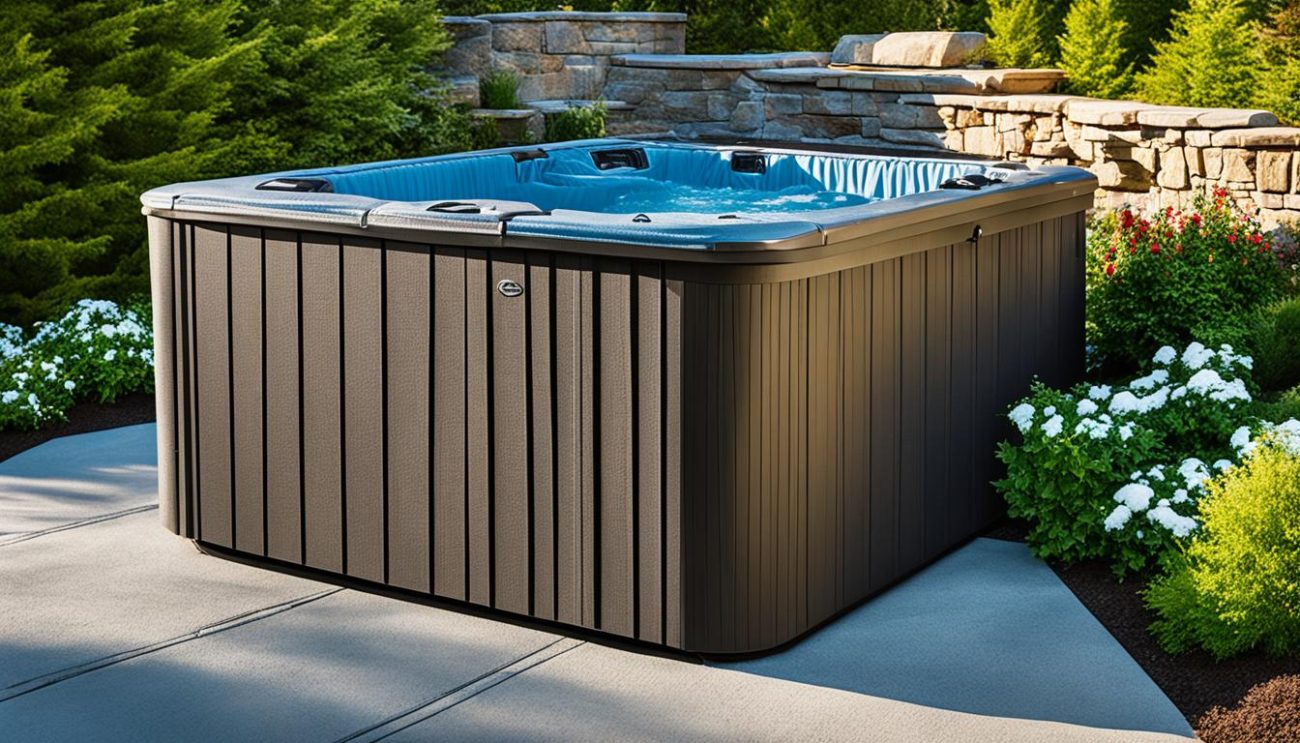
“Having a locking hot tub cover adds an extra level of security to our hot tub area. We can relax and enjoy our hot tub knowing that it’s inaccessible to our children when we’re not around.”
Alarms, Rope and Float Line, Toy Safety
When it comes to pool safety, additional precautions can go a long way in preventing accidents and promoting a secure swimming environment. Apart from adult supervision and fencing, there are other safety measures to consider, such as alarms, rope and float line, and ensuring the safety of recreational pool equipment.
Alarms are effective tools that provide an early warning sign in case of potential danger. Door and exit alarms, fence gate alarms, and water level sensors can help alert you to any unusual activity or unauthorized access to the pool area. By installing these alarms, you can stay vigilant and respond promptly to potential risks.
A rope and float line placed across the pool can serve as an important visual marker, indicating the separation between the deep and shallow ends. This simple but effective measure helps swimmers understand their limits and promotes safe swimming practices. By ensuring the pool is clearly marked, you can help prevent accidental slips and falls.
Additionally, it is crucial to prioritize the safety of recreational pool equipment, especially when it comes to toys and floats. Always choose toys that are age-appropriate, durable, and free from any potential hazards. Avoid toys with small parts that can be a choking hazard or those made of cheap, flimsy materials that may break easily. By selecting safe and suitable recreational pool equipment, you can provide hours of enjoyment while keeping everyone in the pool area safe.
| Key Safety Measures | Benefits |
|---|---|
| Alarms (door, exit, fence gate, water level) | Provide early warning signs in case of potential danger |
| Rope and float line | Clearly marks the separation between deep and shallow ends |
| Safe recreational pool equipment | Prevents accidents and promotes safe swimming practices |
By implementing these safety measures, you can enhance pool safety and create a secure environment for everyone to enjoy. Remember, a combination of layers of protection, including adult supervision, fencing, safety covers, locking hot tub covers, alarms, rope and float lines, and age-appropriate pool equipment, is vital in ensuring the well-being of all swimmers.
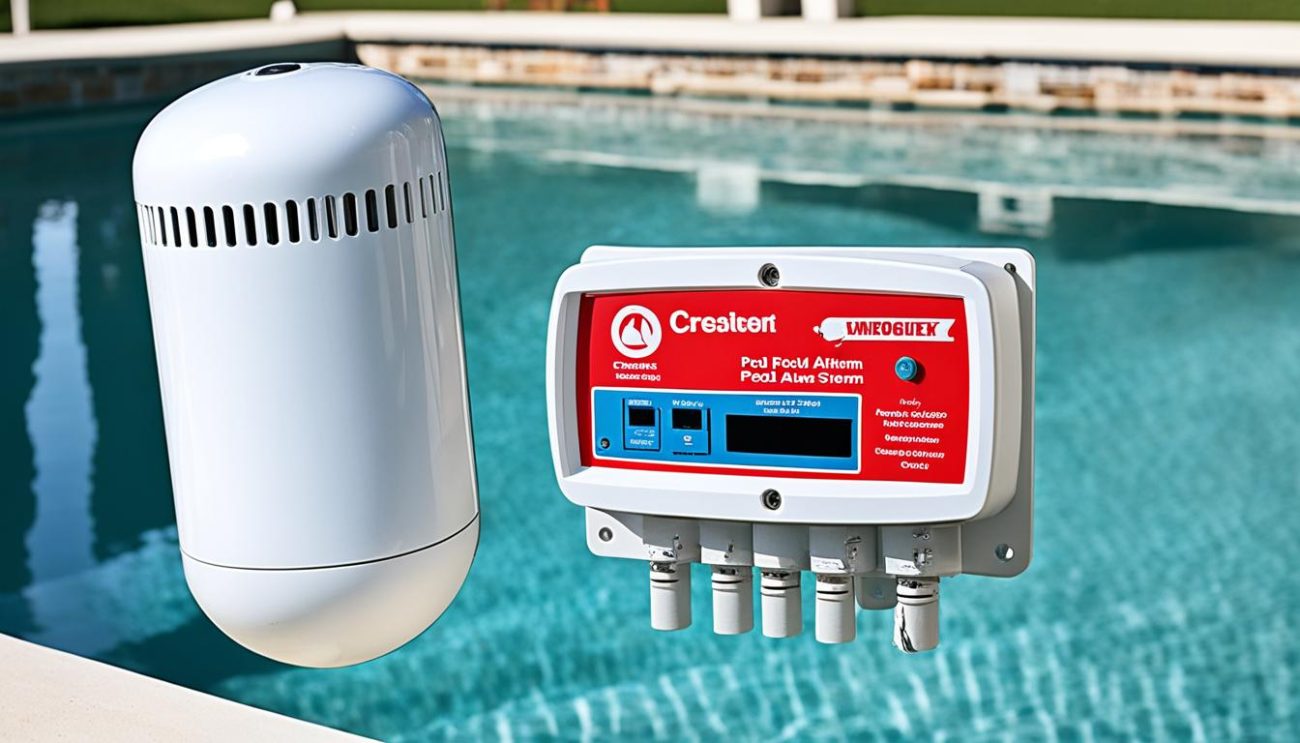
Conclusion
Pool safety is our top priority to ensure the well-being of your family and create a secure and enjoyable pool experience. By implementing various layers of protection, including adult supervision, fencing, safety covers, locking hot tub covers, alarms, rope and float lines, and age-appropriate pool toys and equipment, we can significantly enhance pool safety.
Compliance with safety regulations and following the standards set by ASTM International is crucial in creating a safe pool environment. These guidelines ensure that all pool safety measures, such as fencing and covers, meet the necessary requirements for maximum protection. By adhering to these standards, we can ensure that our pool safety measures are in line with industry best practices.
Regular maintenance and proper storage of pool equipment and supplies play a vital role in maintaining a safe pool environment. By conducting routine checks, cleaning, and storing items properly, we can prevent accidents and ensure that our safety measures remain effective throughout the pool season.
Remember, pool safety is a collective effort, and we all have a responsibility to implement these measures to protect our loved ones. By prioritizing pool safety and compliance with regulations, we can create a secure and enjoyable pool environment for everyone.

